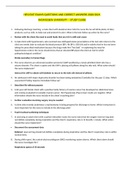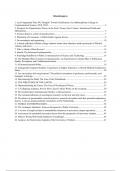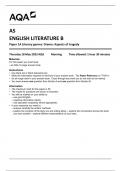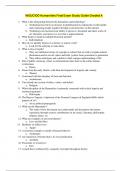Exam (elaborations)
Introduction to Radiologic & Imaging Sciences & Patient Care 8th Edition by Arlene M. Adler Test Bank 2024 LATEST VERSION.
- Course
- Institution
Chapter 8: Medical Imaging Equipment 1. Which component of the x-ray tube produces the x-rays? A. Cathode B. Anode C. Glass envelope D. Collimator Answer: B Rationale: The anode (B) is the component of the x-ray tube where electrons from the cathode strike, producing x-rays through the proc...
[Show more]












